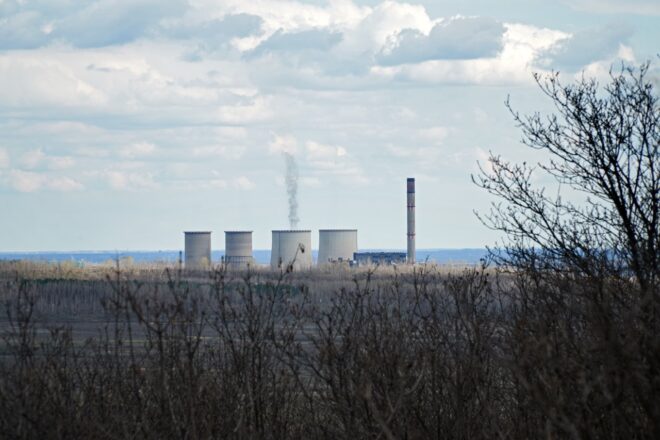Reducing Greenhouse Gas Emissions in Hungary in Light of the Dynamically Changing Requirements of the European Union

Author: Kornél Jakab, State Audit Office of Hungary, 2024
Introduction
The fight against climate change requires Hungary to develop a common set of principles-based targets and to operate a coherent framework for action, monitoring and feedback in order to meet national and international targets for reducing greenhouse gas emissions. This is highlighted by the analysis of the State Audit Office of Hungary (SAO) concluded in 2024, which audited the measures aimed at reducing greenhouse gas emissions and the strategic framework of Hungary in the light of the dynamically changing requirements of the European Union (EU).
Due to greenhouse gas emissions, the effects of global warming affect almost all aspects of life, the natural environment and biodiversity, all sectors of the economy, human habitats and the development of society. The estimated value of economic damages associated with climate change, including projections ranging from the costs of recovery caused by natural disasters to unrealised economic returns, are increasing.
Action is of key importance for Europe, as the continent’s average temperature is rising at around twice the global average. A milestone in the fight against climate change was the Paris Agreement adopted in 2015, which set the target of reducing the average temperature rise. The European Union’s Climate Law aims to ensure that climate neutrality, i.e. a balance between greenhouse gas emissions and removals, is achieved by 2050. The EU Climate Law sets intermediate, regularly revised targets to reach the 2050 target, although adapting to and meeting the changing standards of the EU represent a challenge for all Member States. As a Member State of the Union, Hungary has developed its corresponding strategic framework in line with the standards of the EU.
Harmonisation of the strategic framework and consistent monitoring may support alignment with the requirements
In its analysis focusing on the trends of years 1990-2023, the State Audit Office (SAO) of Hungary concluded that the strategic objectives of Hungary were made up of a diverse set of strategies and measures with different structures and contents, some of which were being renewed at the end of the first half of 2024. Different measurement methods were used to implement the measures and to support the back-testing of results, and no integrated monitoring system was in place. During the period analysed, Hungary did not have any comprehensive system in place to assess the implementation of climate policy action as a whole, nor to measure its effectiveness, while the Monitoring, Evaluation, Reporting (MRE) system is currently under development.
One of the first Hungarian milestones set to achieve the Union’s objectives was the drafting of Act XLIV of 2020 on Climate Protection. The strategic plan documents in force at the end of the first half of 2024, affecting climate policy either directly or indirectly, were very complex, diverse, and differed in content and function. The different strategic plan documents overlap as regards their dimensional and action targets and objectives, but in some cases different sub-targets or measures were included under the same targets, which posed a risk to feasibility.
The approach to climate change adopted in the Hungarian strategic plan documents was basically bi-directional and was aimed at reducing emissions or adapting to climate change. Regarding the implementation of measures, policy governance helped the various sectoral stakeholders through its coordination role, but the analysis has shown that considerable emphasis needs to be placed on strengthening this function in the future. Similarly, improving the monitoring of implementation is essential for ensuring that the feedback-based information being processed facilitates active decision-making and iterative planning, both for the purposes of designing and implementing interventions, and for defining future strategic directions.
The analysis of the SAO has pointed out that the decision supporting tool of the Hungarian policy is the National Adaptation Geo-information System (NAGiS), which provides monitoring data, forecasts and information on climate impacts. However, the system has not been substantially improved since 2020. The National Inventory Report, which also includes greenhouse gas (GHG) emission values, was previously compiled by the National Meteorological Service and is currently compiled by HungaroMet Hungarian Meteorological Service Nonprofit Private Limited Company; however, the Report makes it difficult to differentiate between the emissions of the areas covered by the strategy and to identify the impact of the action plans’ measures on the changes in emissions. In order to assess the evidence base for the design and realisation of the implementation programmes, a monitoring system that can be tracked through indicators and continuously updated would be required, thereby ensuring the monitoring and evaluation of mitigation and adaptation targets and interventions.
The relationship between economic growth and GHG emissions
In developed countries, the relationship between greenhouse gas emissions and economic growth is characterised by the fact that the decrease, the stagnation or at most a slight increase in GHG emissions has sometimes been accompanied by significant increases in the gross domestic product (GDP). The Member States of the European Union have also achieved economic growth while reducing greenhouse gas emissions. Trends in greenhouse gas emissions in Hungary show a higher decrease in the early 1990s. The reference period used for calculating the EU targets wasn’t primarily dominated by technological progress, innovation or efficiency gains, but rather by the dismantling of the formerly major emitter socialist heavy industry between 1990 and 1992. The economic progress since the 2000s has generally been accompanied by cuts in pollutant emissions, although the major decreases have been determined by the various recession-related processes (cf. figure).
The relationship between greenhouse gas emissions and economic growth in Hungary

By 2021, compared to 1990 as the base year, emissions from the industrial sector decreased to the greatest extent, by 37.2%, while the energy sector showed a decrease of 34.3% and the agricultural sector showed a decrease of 28.6%. Absolute emissions from waste management showed a more moderate decrease of 9.1% over the same period. According to estimates on removals and emissions from the Hungarian land use, land-use change, and forestry (LULUCF) sector, it has typically been a net sink over the past decades and was able to offset 12.7% of domestic emissions in 2021. The main contributor to this was the increase in the total population of trees in forest areas. Therefore, the effort to reduce greenhouse gas emissions may also be linked to technological progress related to energy efficiency and alternative energy sources. In parallel, the European Union has a strategic goal to increase energy independence and to become more competitive in the long term through the development and deployment of clean technologies. The reduction of greenhouse gases has the potential to catalyse innovation in many respects and also to create new industries that contribute to improved competitiveness, economic growth and job creation.
In the 2021-2027 budgetary cycle, the European Union has been allocating significant sums for forward-looking technological developments aimed at reducing emissions. This means that by 2030, there is a significant potential for obtaining direct and indirect EU funding available through tenders on climate action, totalling thousands of millions of euros. The resulting investments may also have a positive impact on Hungary’s competitiveness and economic growth in the long term.
Conclusion
In Hungary, during the period of regime change in the 1990s, the reduction in GHG emissions was not primarily dominated by technological development or efficiency gains in manufacturing technologies but the decline of socialist heavy industry. In the past 20 years, the periods of greater emission reduction were not forced by innovation either, but by various recessions. The effective implementation of the planned measures and interventions to achieve climate neutrality requires the coordination of the target systems of the strategic plans as well as the development of an integrated monitoring system to support implementation and back-testing.
Despite the fact that Hungary is not considered a significant GHG emitter in global terms, the country must treat the support of those innovations as a conceptual and strategic management issue, which can contribute to the achievement of climate goals. It is also important due to the fact that investments may have a positive impact on the competitiveness and economic growth of the country.





